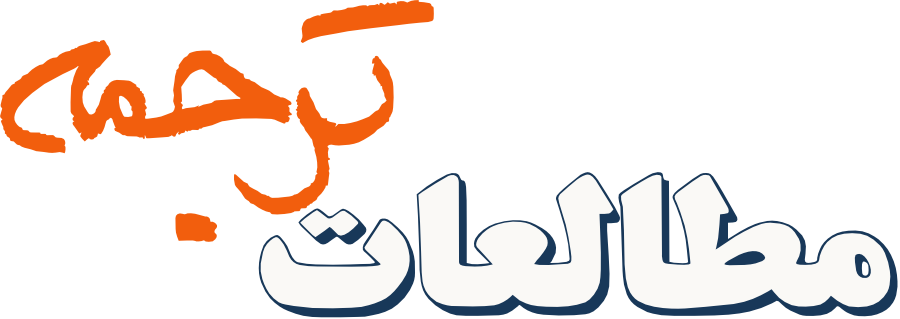الگوی جمعسپاری تهیۀ ابزار الکترونیک کمکمترجم برای منابع علوم قرآنی
چکیده
گرچه بهکارگیری فناوری به بخش جداییناپذیر ترجمه بدل شده است، حافظه ترجمه و بانک اصطلاحات چندانی برای ترجمه منابع علوم قرآنی در دسترس نیست. بدون آنها رسیدن به حداکثر بهرهوری در این زمینه ممکن نیست، زیرا چنین ابزار تصمیمگیری در فرایند ترجمه از/به زبان فارسی را تسهیل میکنند. لذا تهیه آنها ضروری بهنظر میرسد. ساختن پیکرههای موازی و همتراز کردن آنها برای ایجاد حافظه ترجمه و بانک اصطلاحات میتواند در بهبود کیفیت و کمیت ترجمه منابع علوم قرآنی مؤثر باشد. لیکن انجام اینکار از توان یک فرد خارج است. بهکارگیری جمعسپاری در تهیه آنها جایگزینی برای تسریع این کار است، اما خود حیطهای ناشناخته است. از دیگر سو، بررسی مدلهای مطالعات ترجمه نشان داد هیچیک نیازهای این مطالعه را برآورده نمیکنند. با انگیزه پر کردن این شکاف دانشی، پژوهشگران بر آن شدند تا با بومیسازی یک مدل جمعسپاری (مدل متروپلیس) آن را برای مدیریت منابع انسانی در مطالعات ترجمه سازگار کرده و مدل خود برای جمعسپاری (مدل جامع) را ارائه دهند. یافتههای این تحقیق نشان میدهد مدل جامع برای تولید چنین دادگانهایی مناسب است.
کلمات راهنما:
ترجمۀ منابع علوم قرآنی, جمعسپاری, حافظۀ ترجمه, بانک اصطلاحاتمراجع
Barlas, Y., & Carpenter, S. (1990). Philosophical Roots of Model Validation: Two Paradigms. System Dynamics Review, Vol. 6, No. 2, pp. 148–166.
Bowker, L. (2015). Computer-Aided Translation Translator Training. In Chan Sin-Wai (ed.), the Routledge Encyclopedia of Translation Technology. London and New York: Routledge.
Brabham, D. C. (2008). Crowdsourcing as a model for problem solving: An introduction and cases. Convergence: The International Journal of Research into New Media Technologies, 14, 75–90.
Cronin, M. (2010).The translation crowd. Revista tradumàtica, 8.
DePalma, D. A. & N. Kelly. (2011). ‘Project Management for Crowdsourced Translation: How User-translated Content Projects Work in Real Life’, in K. J. Dunne & E. S. Dunne (Eds.) Translation and Localization Project Management: The Art of the Possible (pp. 379–407). Amsterdam and Philadelphia: John Benjamins.
Désilets, A. (2007). Translation Wikified: How Will Massive Online Collaboration Impact the World of Translation? In Proceedings of the Translating and the Computer 29 Conference, 29–30 November 2007, ASLIB, London, UK.
Dombek, M. (2014). A Study into the Motivations of Internet Users Contributing to Translation Crowdsourcing: The Case of Polish Facebook User-Translators. Unpublished Doctoral Thesis. Dublin City University.
Dunne, K. & E. S. Dunne. (2011). Translation and Localization Project Management: The Art of the Possible. Amsterdam and Philadelphia: John Benjamins.
Garcia, I. (2015). Cloud Marketplaces: Procurement of Translators in the Age of Social Media, the Journal of Specialised Translation, No. 23, pp 18 - 38.
Howe, J. (2006). The Rise of Crowdsourcing. Wired 14 (6): 176–183. http://www.wired.com /wired/archive/14.06/crowds.html
Jiménez-Crespo, M. A. (2017). How much would you like to pay? Reframing and expanding the notion of translation quality through crowdsourcing and volunteer approaches. Perspectives. Studies in Translation Theory and Practice, 25(3). 478–491.
Kazman, R., & Chen, H. (2009). The Metropolis Model A New Logic For Development Of Crowdsourced Systems. Communications of the ACM, 52(7), 76–84.
McDonough, J. (2012).Analyzing the Crowdsourcing Model and Its Impact on Public Perceptions of Translation. The Translator, 18 (2), 167–191.
O’Hagan, M. 2016. Massively Open Translation: Unpacking the Relationship Between Technology and Translation in the 21st Century. International Journal of Communication, 10, 929–946 1932–8036/20160005.
Surowiecki, J. (2004). The Wisdom of Crowds: Why the Many are Smarter than the Few and How Collective Wisdom Shapes Business, Economies, Societies, and Nations. New York: Doubleday.
Viitamaki, S. (2007). The FLIRT Model of Crowdsourcing Collective Customer Collaboration. Retrieved from http://www.samiviitamaki.com/2007/02/16/the-flirt-model
چاپشده
ارجاع به مقاله
شماره
نوع مقاله
مجوز
Copyright Licensee: Iranian Journal of Translation Studies. This article is an open access article distributed under the terms and conditions of the Creative Commons Attribution–NonCommercial 4.0 International (CC BY-NC 4.0 license).





